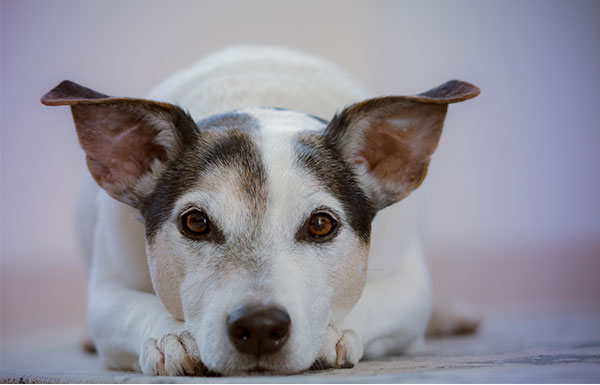What to Expect After Spaying or Neutering Your Dog
One of the most common actions taken by pet parents is to spay or neuter their dog. Studies show that this can lengthen a dog’s life and lower the risk of certain cancers. However, like any medical procedure, there are risks involved. Understanding the warning signs after spaying or neutering is essential for every dog owner.
What to Expect After Spaying or Neutering Your Dog
The process of spaying or neutering typically involves surgically removing a pet’s reproductive organs. For male dogs, this means removing the testes (an orchiectomy), while female dogs may undergo a full ovariohysterectomy (removal of the uterus, fallopian tubes, and ovaries) or an ovariectomy (removal of just the ovaries). Your vet can guide you on which procedure is best for your dog.
After the surgery, your dog will require post-operative care. Once home, it’s essential to keep them comfortable, in a calm environment, and limit their activity to avoid re-opening the incision. Baths or swimming should be avoided during recovery, as moisture can lead to infection.
The Most Crucial Days After Surgery
Most dogs take about 14 days to fully heal, during which stitches are typically removed. It’s crucial to closely monitor your dog’s behavior during this time and watch for any signs of complications. Let’s review some common warning signs of an infected spay incision.
Warning Signs to Look For
How can you tell if your dog is having complications after spaying or neutering? Here are several signs of infection or internal bleeding:
1. Foul-Smelling Discharge
Discharge from the incision site, especially if it is pus-like or has a bad odor, is a strong indicator of infection. While mild drainage can be normal for the first few days, anything unusual in color or smell should be examined by a vet. This discharge may appear green or yellow with a thick consistency. If the discharge persists beyond a week, consult your vet immediately.
2. Unusual Swelling
Unusual swelling around the surgical incision or other areas of the body, such as the face, is a sign of concern. Excessive swelling could indicate pain or discomfort and should be monitored closely.
3. Fever
If your dog’s incision site becomes infected, their belly or paws may feel very hot to the touch. A fever might also make their ears or head warm. Contact your vet if you suspect your dog has a fever.
4. Lethargy and Loss of Appetite
It’s normal for dogs to feel tired and have a reduced appetite for a day or two after surgery. However, if lethargy or a lack of appetite continues for several days, it could signal an infection or other complications.
5. Excessive Licking or Chewing
While some licking at the incision site is expected, excessive licking or chewing can cause irritation and slow down the healing process. It may also be a sign of pain or discomfort.
6. Excessive Bleeding
Excessive bleeding after surgery is a serious issue. If you notice significant bleeding from the incision or blood in the urine, take your dog to the vet immediately.
7. Redness
Redness around the incision site can be another sign of infection, especially if accompanied by heat and tenderness. Any noticeable changes around the incision should prompt a call to your vet.
8. Vomiting or Refusal to Eat
Some vomiting is common after surgery due to anesthesia and pain medications. However, if your dog refuses to eat or drink for more than 24 hours or vomits frequently, it could indicate an underlying problem, such as infection.
9. Pain and Discomfort
While some discomfort is normal, severe pain should not be ignored. If your dog is showing signs of intense pain or is having difficulty urinating, consult your vet immediately.
10. Behavioral Changes
If your dog becomes restless, agitated, or avoids interaction, it may indicate pain or complications. Keep an eye on any unusual behavioral changes.
11. Incontinence
Incontinence, or the involuntary release of urine, is relatively common in spayed females due to reduced estrogen levels that control the sphincter muscle. While this is not necessarily a sign of infection, it could arise as a post-surgery issue.
When Should I Be Concerned?
Symptoms of internal bleeding after spaying or neutering can include:
- Continuous blood seepage from the wound for more than 24 hours
- Significant skin irritation (swelling, redness, etc.) around the incision
- Diarrhea or vomiting lasting more than 24 hours post-surgery
If you observe any of these symptoms, seek veterinary attention immediately. Additionally, if there is an unpleasant odor, fluid, or pus discharge from the incision, it could suggest a bacterial infection that needs prompt treatment.
How Common Are Complications After Spaying or Neutering?
Spaying and neutering are the most common surgeries performed by veterinarians, and the risk of complications is low. However, it’s essential to be prepared for the possibility of complications and to know what to look out for.
Conclusion
Spaying or neutering is a routine procedure that many pet owners choose for their dogs. While complications are rare, understanding the warning signs after surgery is crucial to ensure your dog’s recovery is smooth and uneventful. Being vigilant will help you keep your dog healthy and happy after surgery.
FAQs
How long should my dog wear a cone after spaying?
Cone collars should be worn for 10 to 14 days after the procedure to prevent the dog from licking or biting the incision.
What are the most crucial days after spaying?
The first few days after surgery are the most important. Monitor your dog closely for signs of pain or discomfort, and ensure they don’t lick or chew at the incision site.
How should I lift my dog after spaying?
Avoid lifting your dog by the hind legs or abdomen after surgery. Instead, gently support their hindquarters and chest when picking them up.
